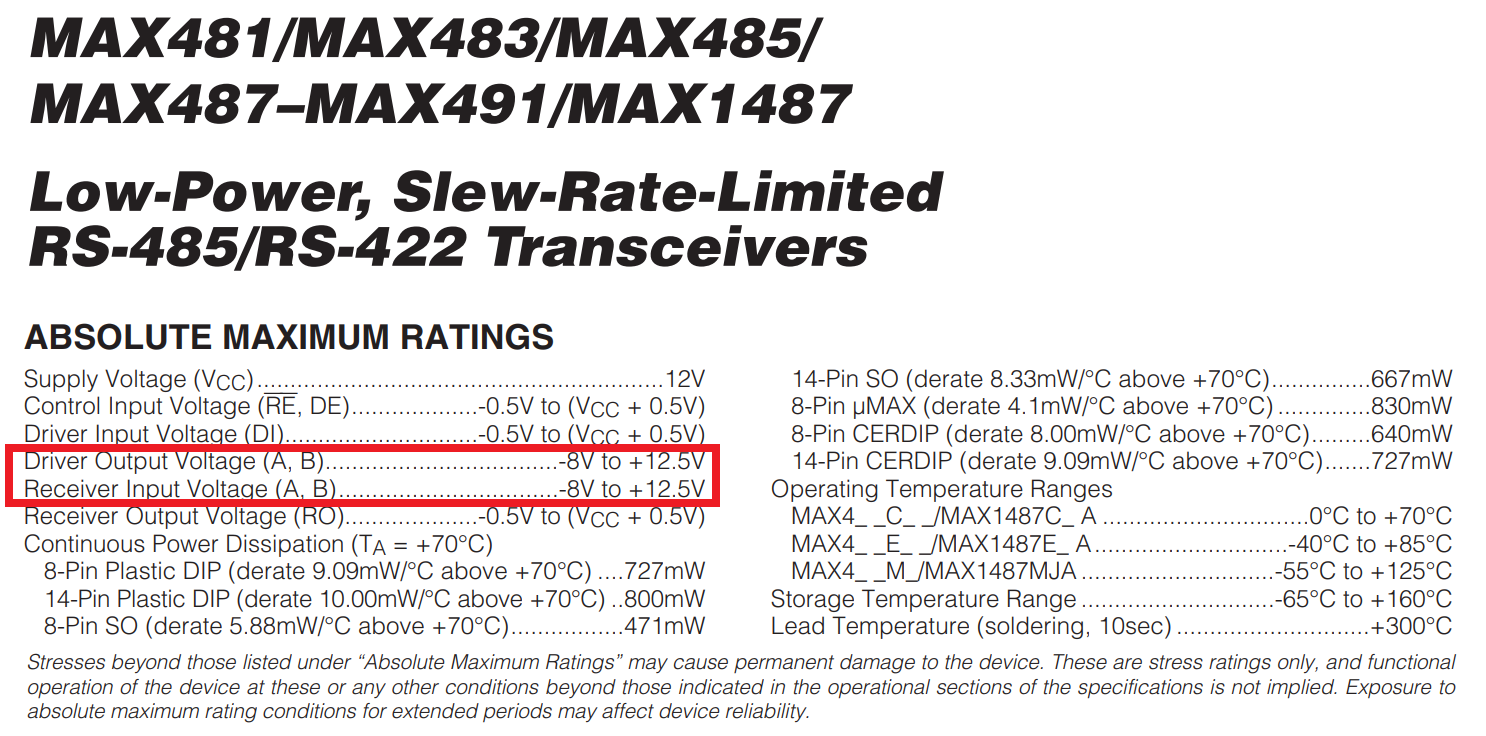Post History
What part of the absolute maximum ratings for the A and B data lines do you think would be protected by 33 volt TVS diodes: - If the chip is powered from a 5 volt supply then you use 5.6 volt TV...
#1: Initial revision
What part of the absolute maximum ratings for the A and B data lines do you think would be protected by 33 volt TVS diodes: -  If the chip is powered from a 5 volt supply then you use 5.6 volt TVS diodes to ground. Maybe you can raise the TVS to 10 volt if you have a lot of common-mode noise on your your bus but, nothing else would cut the mustard. The 33 volt TVS diodes won't protect the chip. Also watch out for GND loops from one part of your installation to another; significant currents can flow (I'm talking amps not mA) and this can do significant damage if not controlled. I've given up using non-isolated 485 chips for this very reason.


















